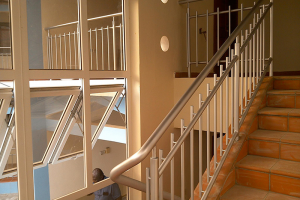Comparison of Machining and Casting Processes for Stainless Steel Railing Accessories
1. Machining Process:
Definition: Involves cutting, shaping, or drilling stainless steel using tools like CNC machines or lathes.
Precision: Delivers exceptional accuracy and consistency, ideal for complex geometries and tight tolerances.
Surface Finish: Provides a smooth and polished finish without extensive post-processing.
Applications: Suitable for small, precise components like brackets, end caps, and connectors.
Advantages: High precision, repeatability, and excellent surface finish.
Limitations: Higher material waste and longer processing time for larger components.

2. Casting Process:
Definition: Molten stainless steel is poured into a mold to form the desired shape.
Precision: Suitable for producing complex shapes in a single step, though may require secondary machining for tight tolerances.
Surface Finish: May need additional polishing or grinding for a smooth appearance.
Applications: Ideal for larger components or intricate designs that are hard to machine.
Advantages: Cost-effective for large quantities and complex shapes.
Limitations: Surface finish may vary, and shrinkage or porosity can occur.
Key Differences:
Precision: Machining excels in fine detail, while casting is better for large or intricate shapes.
Material Usage: Machining generates more waste; casting minimizes material loss.
Cost: Casting is more cost-effective for bulk production, while machining is better for custom or low-volume parts.

 +86 159 6420 9667
+86 159 6420 9667  sales@haxrailing.com
sales@haxrailing.com 



